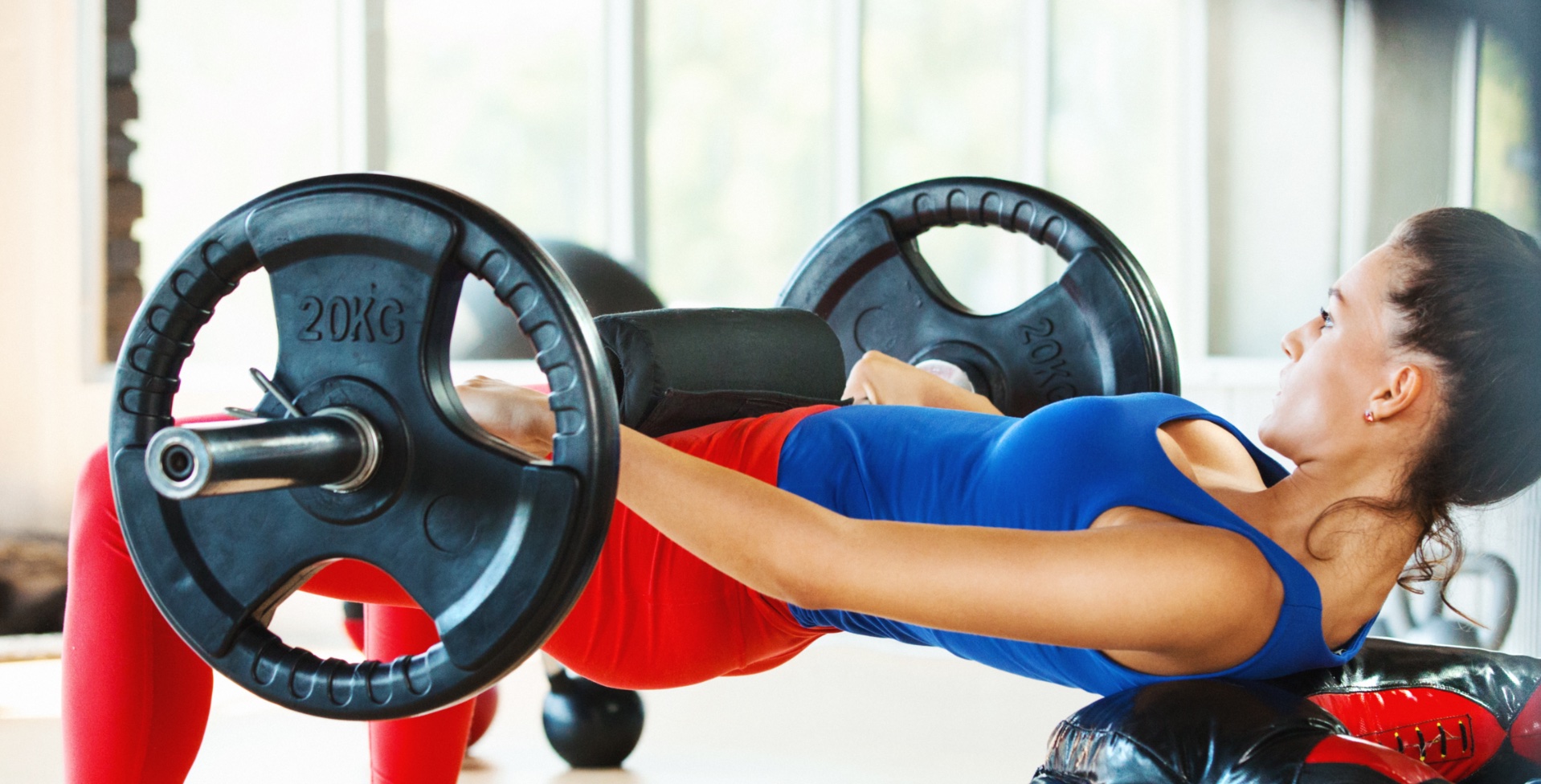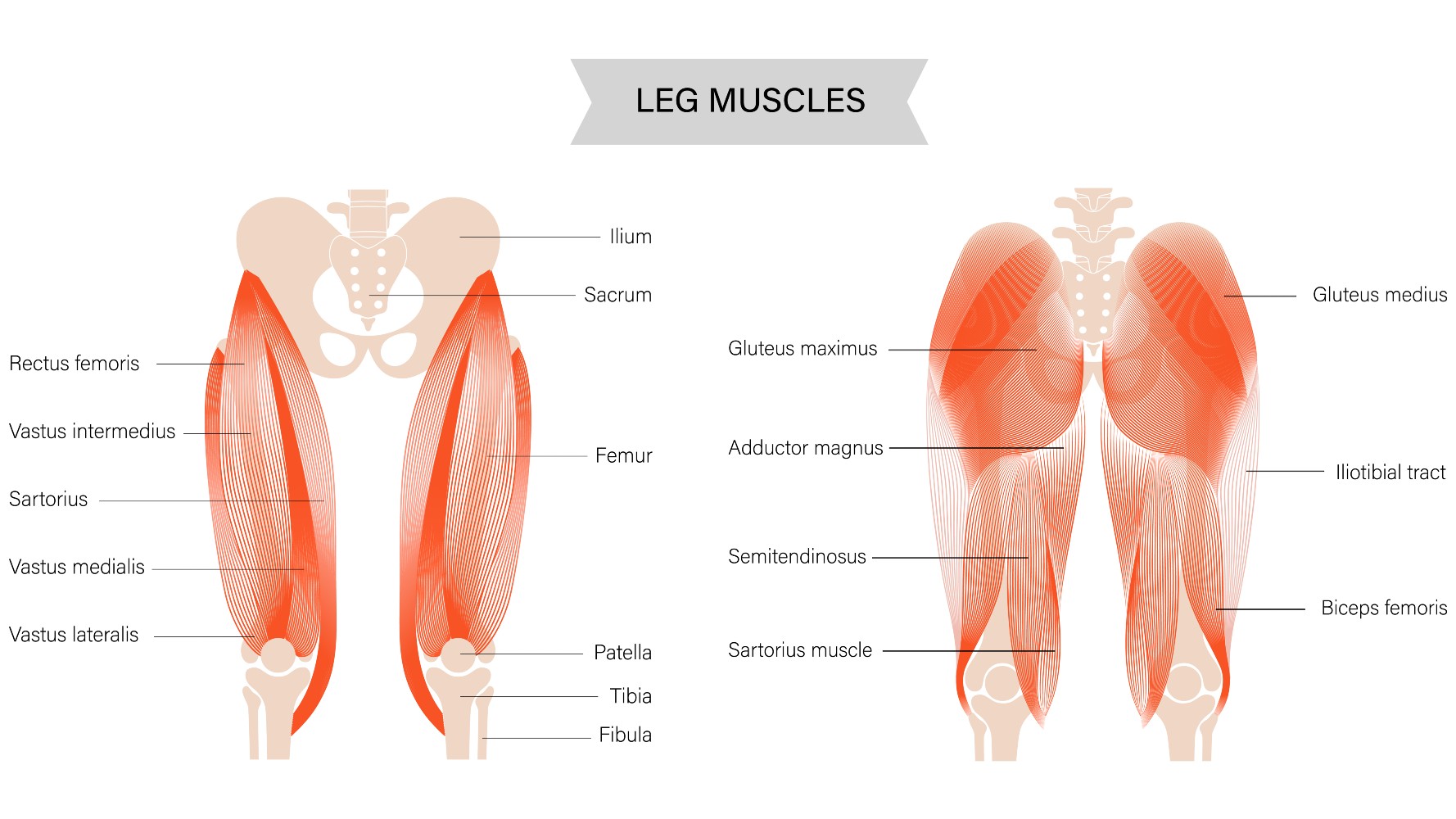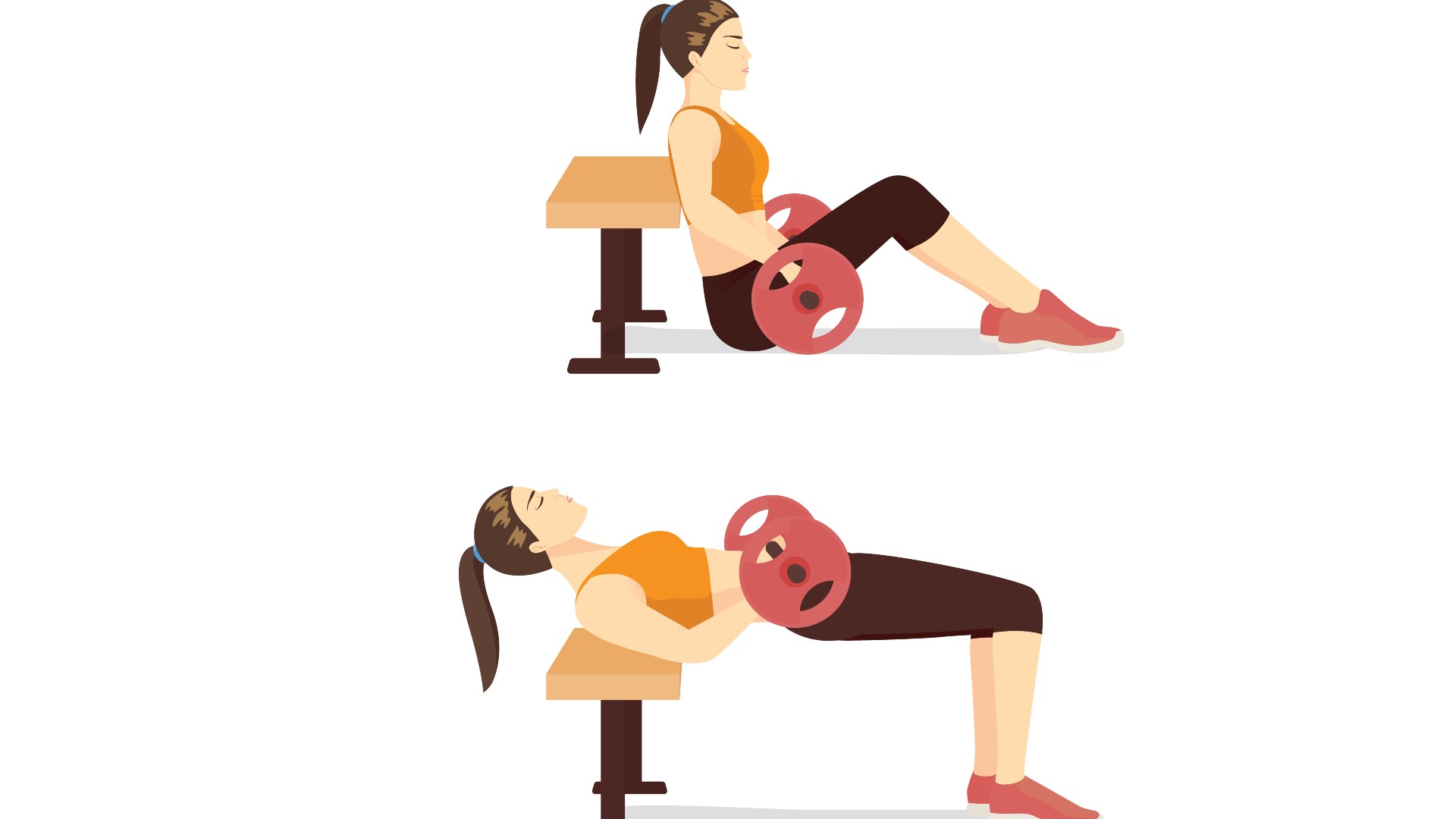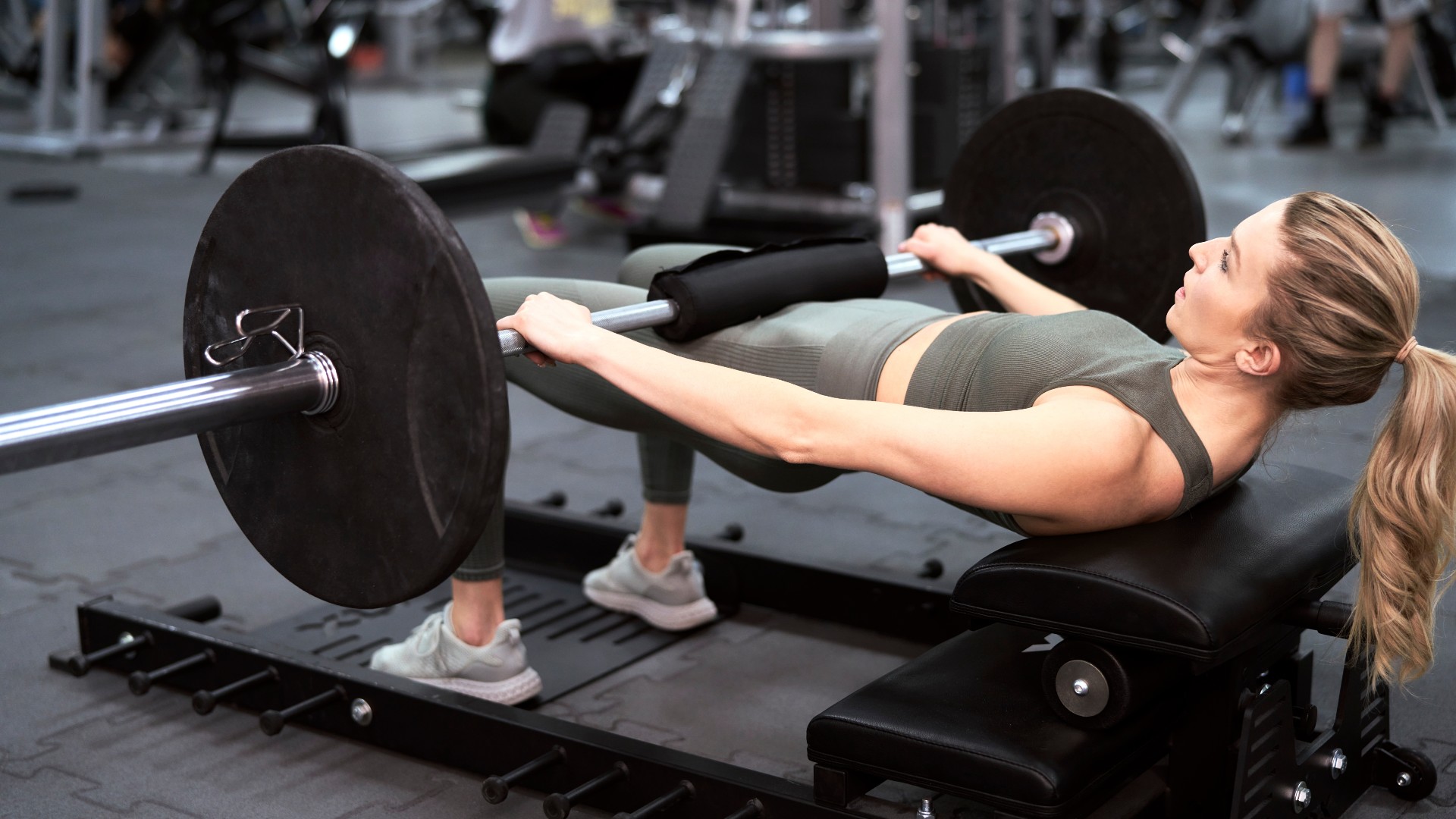
I’ve embarked on a glute-growing mission, adding glute exercises like the hip thrust into my lower body workouts to build strength and definition in my backside.
We don't shy away from a fitness challenge at Tom’s Guide. We’ve undertaken some testing glute workouts already, including Kim Kardashian’s glute workout and this bodyweight Pilates ab workout for abs and glutes, but next to tackle was the hip thrust, which, admittedly, I’ve been nervous about committing to.
The hip thrust was created by the famous ‘Glute Guy’ Bret Contreras, who is still considered the leading expert in shaping peaches around the world from his coveted gym — The Glute Lab. Of course, you can build your glutes without weights, but the barbell hip thrust is considered one of the best ways to engage, strengthen, and grow your glutes alongside a dedicated training plan.
As a caveat, it’s easy to hurt your lower back during the barbell hip thrust by overloading the bar, and the move requires a degree of existing glute strength and technique. If you’re new to the exercise, check your form with a personal trainer first, and try building strength using a bodyweight variation like glute bridges. You can also read our guide on how to do hip thrusts.
What do hip thrusts work?

The hip thrust targets your gluteus maximus — the largest and most powerful muscle in your body, yet commonly underused and prone to weakness. Undertrained glutes can often lead to pain and sports-related injury, so getting the max from the maximus is as protective as it is butt-building.
The gluteus maximus works to keep you upright alongside two other gluteal muscles: the gluteus medius and gluteus minimus. Collectively, your glutes stabilize your pelvis and lower body, support movement, and rotation of the hip, and help you balance. Technically, your glutes count as part of your network of core muscles, so glute strengthening exercises will help protect the lower back, hips, and knees from injury.
Hip thrusts also activate your gluteus medius, hamstrings, quads, core, and adductors (inner thighs). Through the humble hip extension, you can build strength, size, and power in your glute muscles which could improve running, athletic performance, and mobility and builds a well-formed backside to boot.
Get instant access to breaking news, the hottest reviews, great deals and helpful tips.
How to do hip thrusts

You can use the best resistance bands, kettlebells, adjustable dumbbells, or a barbell to perform a hip thrust, but the barbell allows you to pack on more weight, which lends itself to a hypertrophy technique (the muscle-building process) called progressive overload (more on this below).
Follow these steps:
- Sit with your back against a bench or box with the barbell over your hips, feet planted shoulder-width apart, and knees bent
- The edge of your bench should align with your shoulder blades
- Grip the barbell and rest your elbows on your bench
- Tuck your chin, brace your core and inhale
- On the exhale, push through your heels and drive your hips upwards with power while keeping your chin, ribs, and pelvis tucked
- At the top, your eye line should be forward-facing. Squeeze your glutes and pause, then slowly lower your hips

I did hip thrusts every day for a week to help grow my glutes — and wow
I decided to thrust my way to stronger, more defined glutes. Here’s what I learned.
1. My glutes were on fire
Hip thrusts have been my arch nemesis for years, and the work I’ve put into avoiding them thus far has come back to — quite literally — kick me in the butt.
According to a study published in the Strength and Conditioning Journal, the barbell hip thrust maximizes glute activation and hip extension strength because the muscles stay under tension the entire time. The positioning of the bar on your hips also creates a “different pattern of activation” compared with vertical loading in barbell squats or deadlifts. In short, more is required from your glutes and hip extensors in this position than other muscles like your hamstrings, meaning you work your glutes to their max.
That should explain why walking became a challenge in itself the next day.
2. My glutes weren’t as strong as I thought
Barbell hip thrusts have a way of humbling you, mainly because glute-isolating exercises leave you with nowhere to hide. I program clients to lift a weight that would feel like a struggle on the last few reps but won’t compromise their form, so I had to put my ego aside and take my own advice, strictly sticking to 90 pounds for four sets of 12 during the first week.
To get the most from this exercise, you must drive your hips up high, squeeze your glutes and core, and thrust with power. If you can’t draw a straight line between your shoulders and knees at the top, consider scaling back on weight and focusing on form; this will maximize hip extension (and gains) rather than loading your lower back for sake of a few extra pounds.
Most of us are guilty of lifting weights with our egos at times, but the load happens with time, not haste — something I still trip over when trying something new.
3. Change doesn’t happen overnight
My glutes felt supercharged by the end of the week, and my glute muscles have never felt so switched on. I also noticed my hips and hamstrings felt sore, and I even started to enjoy it. But of course, I couldn’t see a physical difference.
Unfortunately, you won’t sculpt the rear of your dreams without a process called progressive overload to build glute definition and strength. It takes several months of regular training, manipulating the volume of the exercise to encourage muscles to adapt and grow by changing variables like weights, reps, or frequency.
If you consider yourself a beginner, practice with your body weight first and focus on fully engaging these muscles, progressively increasing weight. Aim for 1-3 sets of 8-12 reps, building up to 3-4 sets of 6-8 reps over time. If your goal is strength training, increase the sets and decrease reps: 3-5 sets of 1-5 heavy reps is ideal for advanced lifters.
My verdict
Hip thrusts are a brilliant addition to your leg day routine and can be used alongside squats, lunges, and deadlifts to strengthen your glutes and build leg muscle and definition.
But you need a well-rounded glute program to build a well-rounded peach, so remember to target all three gluteal muscles. We’ve rounded up the 5 best exercises to target the glutes here. If you’re quad dominant, it’s ubiquitous for your glutes to not “activate” properly during workouts, and other muscles may take over.
Glute isolation exercises can be used in a glute activation routine to “switch on” your glutes before a workout, helping you maximize their role on leg day. Train like Bret Contreras using this glutes workout to activate your glutes as a warm-up before your next leg workout.
Next up: Daisy Keech shares her top 3 exercises for building your glutes, and these resistance bands leg workouts are some of our favorites. I tried this 7-move kettlebell leg workout to build bigger legs — and wow.

Sam Hopes is a level 3 qualified trainer, a level 2 Reiki practitioner and fitness editor at Tom's Guide. She is also currently undertaking her Yoga For Athletes training course.
Sam has written for various fitness brands and websites over the years and has experience across brands at Future, such as Live Science, Fit&Well, Coach, and T3.
Having coached at fitness studios like F45 and Virgin Active and personal trained, Sam now primarily teaches outdoor bootcamps, bodyweight, calisthenics and kettlebells.
She also coaches mobility and flexibility classes several times a week and believes that true strength comes from a holistic approach to training your body.
Sam has completed two mixed doubles Hyrox competitions in London and the Netherlands and finished her first doubles attempt in 1:11.
